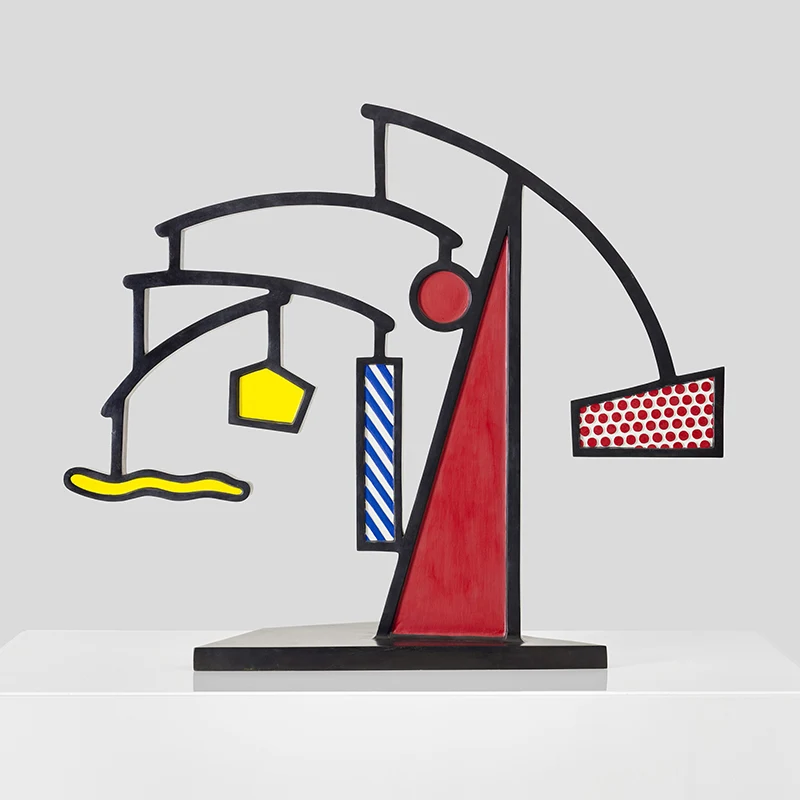Lichtenstein Remembered is a tribute to Roy Lichtenstein’s artistic legacy on the occasion of his centenary. Curated by Irving Blum at the Gagosian New York, the exhibition aims to shed light on the artist’s sculptures, which have been somewhat overshadowed by his iconic paintings known for their vivid colors and comic book aesthetics.
These sculptures, often referred to as “drawings in space,” defy traditional expectations of three-dimensional art. They possess a captivating hyperreal quality, distorting perspectives and challenging viewers’ spatial perceptions.
Lichtenstein’s exceptional talent lies in his capacity to breathe textural depth into two-dimensional forms, a signature that has left an indelible impression on contemporaries like David Hockney. The artist used familiar techniques from painting and printmaking to create amazing sculptures in space. He made sculptures of things like glasses, lamps, mirrors, and mobiles, as well as faces and explosions, all with a clever use of Pop art.
His sculptures possess a striking hyperreal quality. Comprising bold shapes and vibrant colors, they exude a playful and childlike essence while simultaneously capturing intricate subjects, such as the ephemeral nature of steam, in the enduring medium of bronze. The exhibition also features drawings and paintings that show how these sculptures were planned and made. For example, “Desk Explosion” from 1965 is a small sculpture made of porcelain enamel on steel. It simplifies its subject to a burst of yellow and red, with holes in a flat sheet of white metal representing a puff of smoke, similar to the Benday dot technique Lichtenstein often used.
The artist turned these outlines into larger drawings. His assistant, sculptor Carlos Ramos, used them to create small wooden models. The Tallix Foundry, now UAP, used these models to create molds for casting final sculptures, usually in bronze, which were then painted and treated for their ultimate appearance. Gagosian’s longstanding collaboration with Lichtenstein and his widow, Dorothy Lichtenstein, has led to about 15 exhibitions dedicated to various aspects of his work. The exhibition is accompanied by a fully illustrated catalog featuring essays by Daniel Belasco, Adam Gopnik, and Steve Martin, offering insights into the profound impact of Lichtenstein’s sculptures.
Featured Image: Roy Lichtenstein, Mobile I (1989). Courtesy of Gagosian



